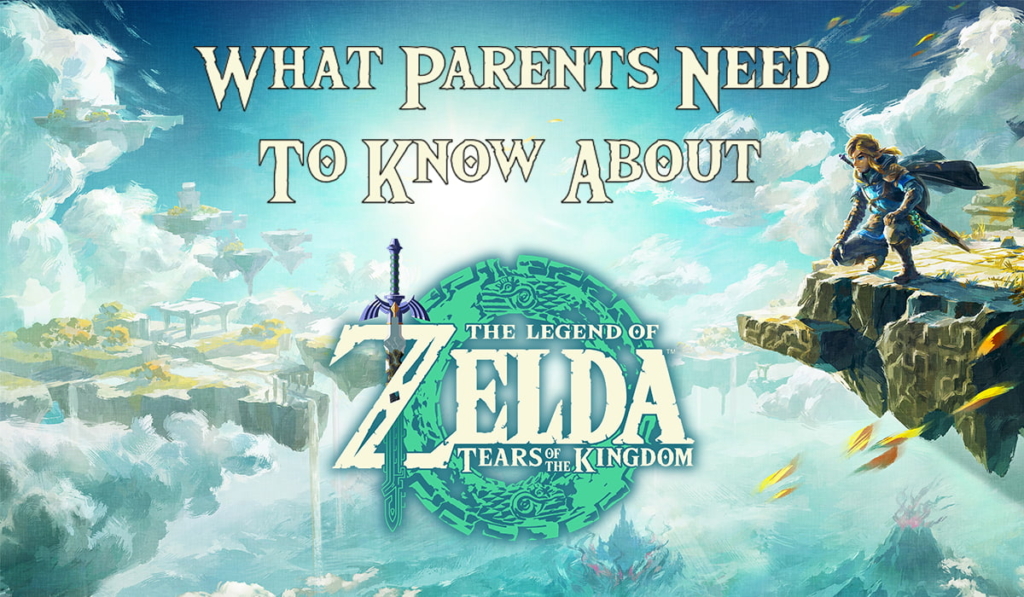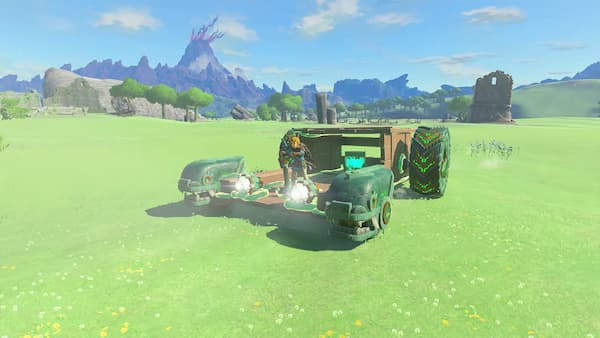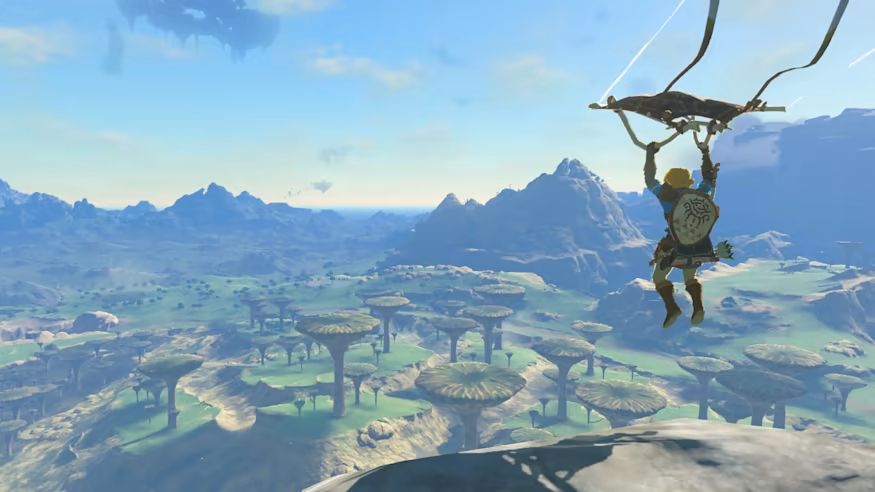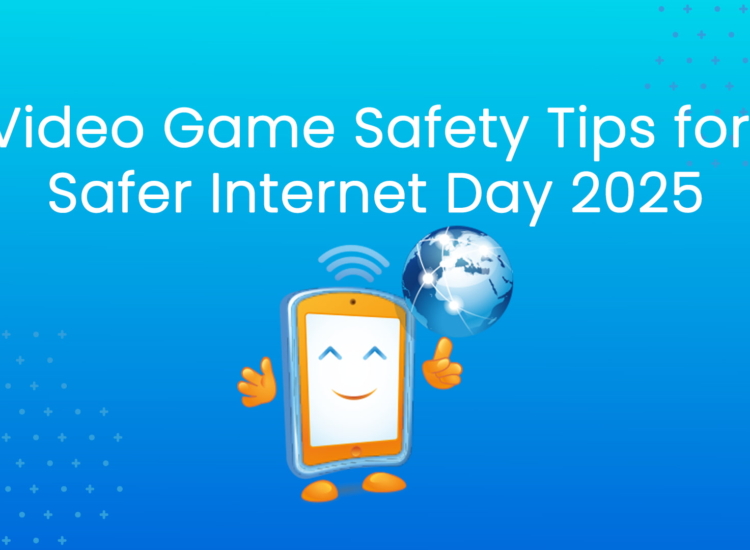What Parents Need to Know About The Legend of Zelda: Tears of the Kingdom

The Demon King, Ganondorf, has returned… again. The Legend of Zelda: Tears of the Kingdom sees Zelda and Link once again facing a cataclysmic event threatening the kingdom of Hyrule. Fortunately, your family can help reunite the heroes and stand against the evil forces.
Find out everything you need to know to decide if Tears of the Kingdom is appropriate for your family.
Is The Legend of Zelda: Tears of the Kingdom Appropriate for Kids?
The Legend of Zelda: Tears of the Kingdom is rated E10+ (Everyone 10+), with Content Descriptors for Fantasy Violence and Mild Suggestive Themes. Tears of the Kingdom does not have any Interactive Elements assigned, meaning players do not have the ability to interact online or make in-game purchases.
According to the ESRB Rating Summary, “Players use swords, hammers, bows, and explosives to attack enemies that generally disappear
The Rating Summary also cites that some characters “wear revealing outfits.”
Where Can I Play The Legend of Zelda: Tears of the Kingdom?
The Legend of Zelda: Tears of the Kingdom is available on the Nintendo Switch.
How Much Does The Legend of Zelda: Tears of the Kingdom Cost?
The Legend of Zelda: Tears of the Kingdom costs $69.99 for the standard edition. If you’re interested (and can find one) there is also a Collector’s Edition, which includes some additional goodies for $129.99.
What is The Legend of Zelda: Tears of the Kingdom?

- There’s always at least one Link, and there’s (almost) always a Zelda. Most of the time these are various reincarnations of Link and Zelda, but there are a few direct sequels.
- There’s always an insurmountable evil. This often takes the form of the Demon King Ganon and/or his human form Ganondorf. He’s mean and scary and powerful; we don’t like him. Sometimes there are other evil big bad guys that want to resurrect Ganon. Other times there are big bad guys that are independent evil contractors and have nothing to do with Ganon.
- Link needs to traverse the world to collect powerful weapons and/or artifacts to defeat Ganon/Ganondorf/big bad guy to save the world!
- I’ve always thought of Zelda games as puzzle boxes. Be it in one of the series’ dungeons (which are large, themed environments often designed around a specific ability or item) or out in the open world – players can gradually unfold more and more of the environment by solving spatial puzzles of increasing difficulty.
Tears of the Kingdom is one of the few direct sequels in the series and picks up with the same Link and Zelda we saw in 2017’s The Legend of Zelda: Breath of the Wild (E10+). Breath of the Wild featured the first open-world environment in the Zelda series, allowing players to explore a seamless, open-ended Hyrule. Tears of the Kingdom looks to up the ante by changing up Hyrule’s environment, adding mysterious floating islands to explore, and introducing new abilities.
How Does The Legend of Zelda: Tears of the Kingdom Play?
The Legend of Zelda: Tears of the Kingdom is a single-player, open-world, action/adventure game. Players will join Link in a combination of puzzle solving, monster fighting, and exploration, as he looks for Zelda and tries to defeat the resurrected Ganondorf. Tears of the Kingdom adds to the vast landscape of Hyrule with the addition of floating islands – aptly named Sky Islands – and new abilities to interact with the world.
One such ability is called Recall, which allows Link to essentially reverse the flow of time on a specific piece of the environment. For example, if a boulder falls from one of the world’s Sky Islands, Link can climb onto said boulder and use Recall on it to fly into the sky to more easily reach one of the mysterious floating masses. Link can also use this ability to gain the upper hand in combat. An enemy may launch a boulder at Link, but with Recall he can target said boulder and reverse its movement to instead bonk the enemy.
Tears of the Kingdom will allow the player to solve puzzles creatively using the Fuse ability. The player can fuse items found in the environment to create new and enhanced gear. Say you’re stuck fighting enemies with a frail branch… the thing is going to break after a couple of hits, leaving you high-and-dry. Using the fuse ability Link can combine that branch with a boulder to create a durable hammer to bonk enemies. This can be done with all manner of items and weapons, from swords and shields, to plants and monster parts.
Similarly, players can use the Ultrahand ability to create complex machines – like chariots, boats, flying machines, and more – that allow Link to traverse Hyrule with speed and pizzaz. Much of the traversal in the game is dependent upon a stamina meter. If Link is climbing a mountain and runs out of stamina he’ll fall to his doom. But using the Ultrahand ability Link can combine some logs, fans, and a balloon to reach the top of the mountain in safety.
Players will also battle various baddies using swords, axes, shields, fragile twigs, and more.
Link can also use the Ascend ability to… ascend! The catch is that Link can only Ascend through ceilings. Players can quickly navigate caves, buildings, and traps using this ability.
The extent of these mechanics is still unknown, but it’s clear that experimentation and imaginative problem solving will play a huge role in Tears of the Kingdom.
Players will also battle various baddies using swords, axes, shields, fragile twigs, and more. Players will help Link assess enemies, strategize, dodge, block, and attack to overcome a variety of classic (and new) Zelda enemies. Look forward to battling Bokoblins, to Moblins, to the fierce Lynel, and more! Seriously… watch out for those Lynels… save your game.
While much of the game is still a mystery, it’s clear that Link will need to find Zelda and join forces to save Hyrule again!
Be the Hero of Your Kids’ Video Game Play!
The best way to know what your kids are playing is to stay involved, whether they’re exploring Hyrule alone or jumping into another game with friends. As we all know, parents are the heroes of their homes, so it’s time to travel the Kingdom of Your Domicile on a quest to make sure your kids are having appropriate video game experiences.
A great first step is to visit ESRB Land to check the assigned rating information for a game before you decide to buy or download for your kids. There, you’ll find everything you need to know about the content in a game and (thanks to Rating Summaries) the context in which it’s presented to the player.
ESRB’s annual parent surveys reveal that many parents and caregivers also playing the game, watching gameplay online, and talking to other parents are very helpful in the decision making process. You may even want to pick up a controller yourself! Once you engage with video games, it will be that much easier to nurture an ongoing, judgement-free conversation with your kids about why they love them.
Tears of the Kingdom adds to the vast landscape of Hyrule with the addition of floating islands – aptly named Sky Islands – and new abilities to interact with the world.
Next on your quest is a trek along Household Rules Road. And by this, I mean it’s really helpful to set household rules for the whole family. Establishing rules around what your kids can play, when and for how long, with whom, and whether they can spend money on new games or in-game purchases can help everyone stay on the task and avoid speed bumps on your journey. Remember, some of these rules may even apply to you, like appreciating the rhythm and timing of a quest or match!
But everyone makes mistakes, so it’s helpful to equip your family with the Legendary Parental Controls. Virtually all video game devices – including consoles, PCs, smartphones, and some games themselves – offer parental controls to back up your household rules. We even have step-by-step guides to help you navigate activating these settings at ParentalTools.org.
While you’re there, you can visit the Family Gaming Guide for ancient wisdom on topics from managing screen time to keeping multiplayer experiences appropriate.



